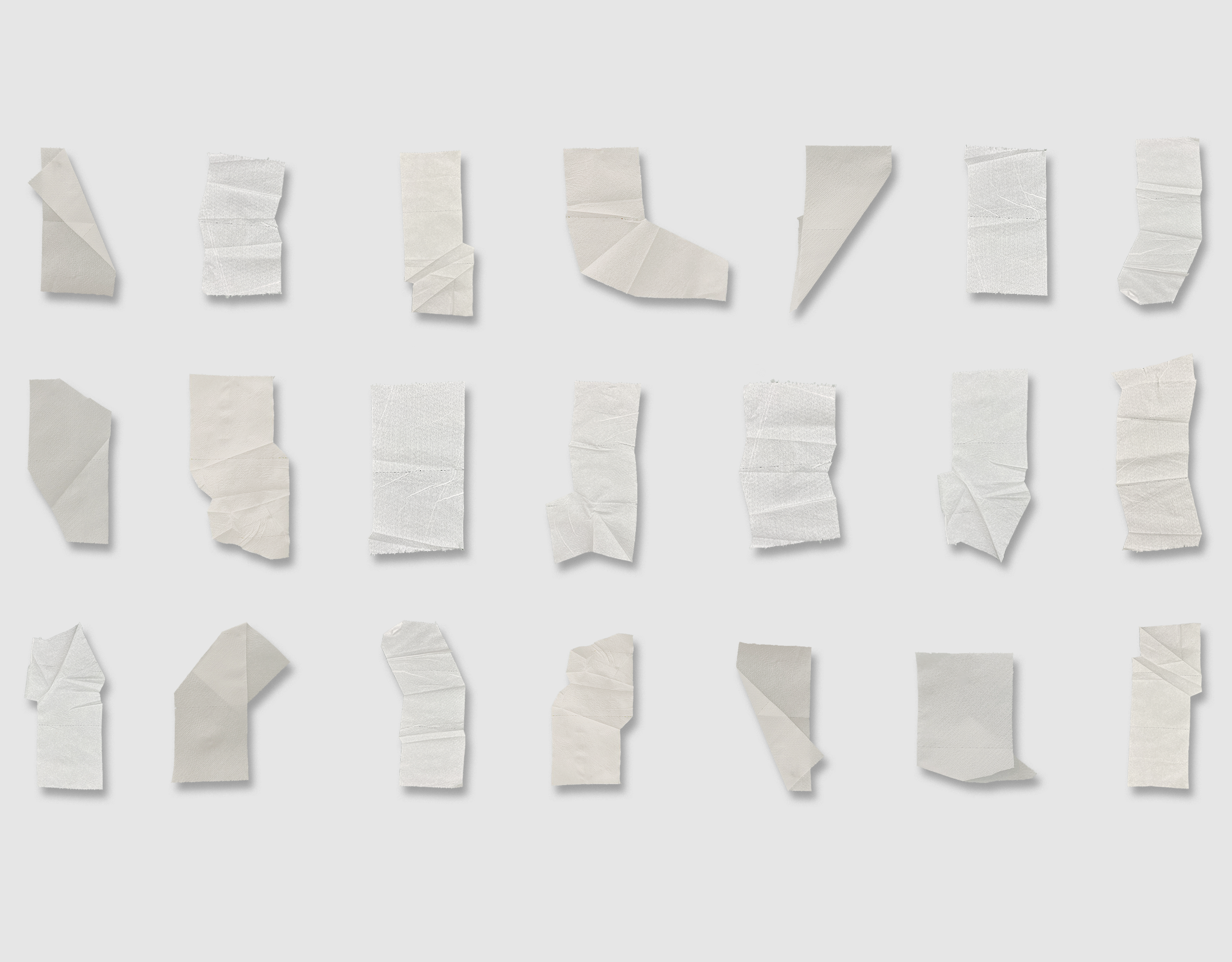



Toilet paper is usually considered a mere utilitarian object—ubiquitous, used, discarded. However, with the escalation of the COVID-19 pandemic in March 2020, toilet paper underwent an immediate change in classification, becoming a premium product sold out in stores nationwide. Toilet Paper is a meditation, a process, and a website inspired by this shift in collective perception. The immediacy of the transformation offered a moment of slowness, of reflection. The last piece of toilet paper on the roll had always been negligible but was elevated overnight into preciousness. I began saving these final pieces, as one does with precious objects, and in doing so, started seeing these pieces as forms of serendipitous folds—as media in and of itself. If you consider toilet paper as media, you can readily see how it shares a form with other, more conventionally understood media such as cassette or VHS tapes, which also feature a long strip wrapped around a cylinder.
Contextualized within this lineage, toilet paper is an “old media,” prefiguring both these examples. How can this newly understood timeline be extrapolated into current media forms? Toilet Paper as a website takes the interactive gestures of scroll and pause as the connecting point between toilet paper (invention dated to ~19th century), cassette/VHS tapes (20th century), and the contemporary Web (21st century). The website is structured as a single long scroll, beginning with an overview of the graphic form possibilities of the last piece of toilet paper and continuing into a personal timeline of toilet paper use throughout the pandemic. Each roll of toilet paper used is marked with a video overlaid with the date when the last piece on the roll was reached.
The videos feature my hands folding and unfolding these last pieces, emphasizing them as forms and mediums for making. The videos are also played via the scrolling gesture, bringing the person scrolling the website into conversation with this precious object, which itself was reached via scrolling of toilet paper. Between each video is a moment of pause, a fullscreen view taken up by lighthearted notes on the circumstances and thoughts surrounding the end of each toilet paper roll. The changing of a roll is itself a pause in an endless scroll, as we continue to need toilet paper and thus continue scrolling toilet paper rolls. The pause is a timestamp, marked by elapsed time on a cassette or VHS tape, marked on the website as a date Timestamps denote moments of note.
Toilet Paper—in contextualizing the quotidian within the lineage of more eminent media, in connecting the societal behaviors exacerbated by the pandemic to a personal experience within it—unfolds the banal into the distinctive, mirroring the perspective shift by which the project was inspired.